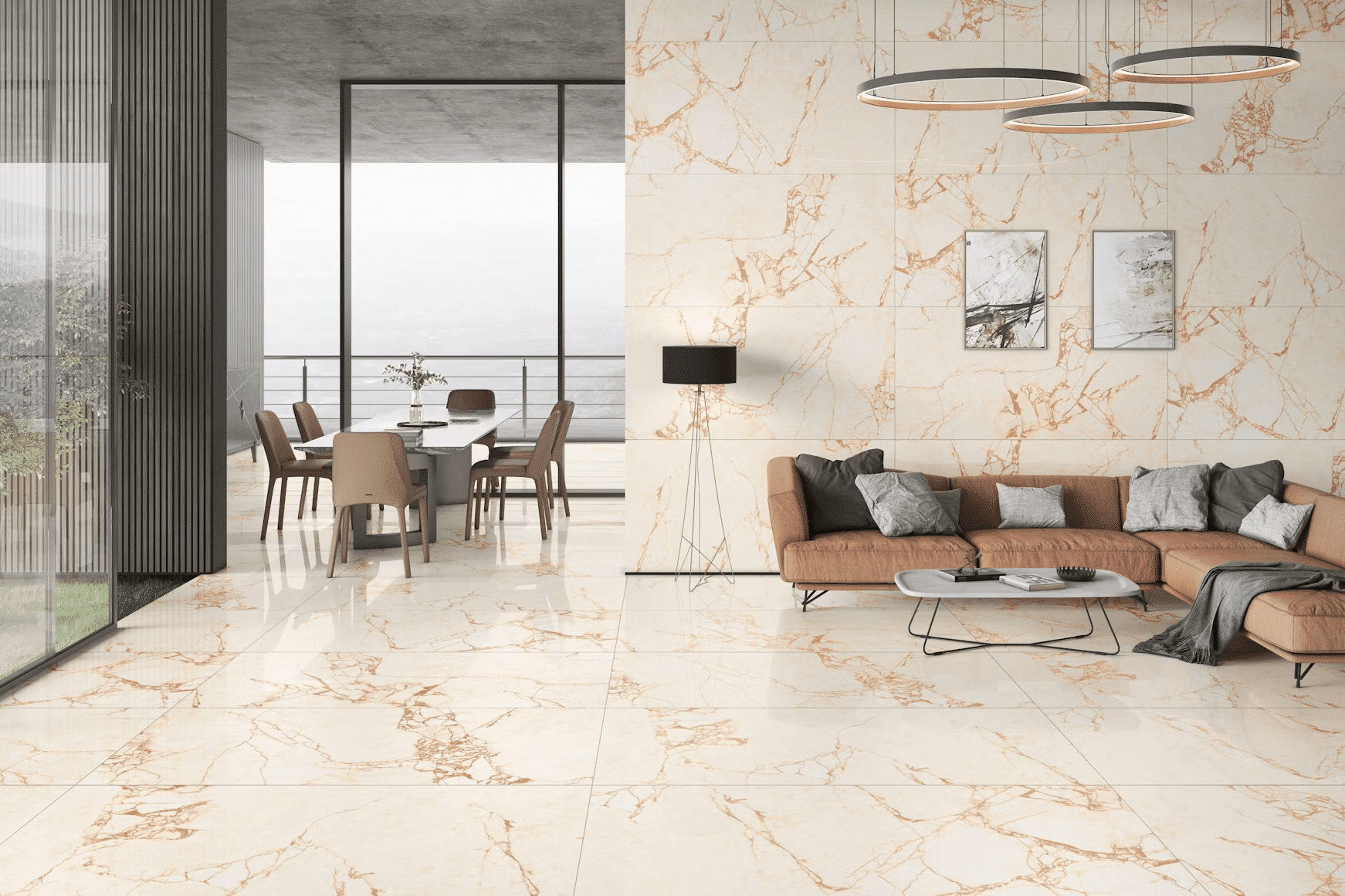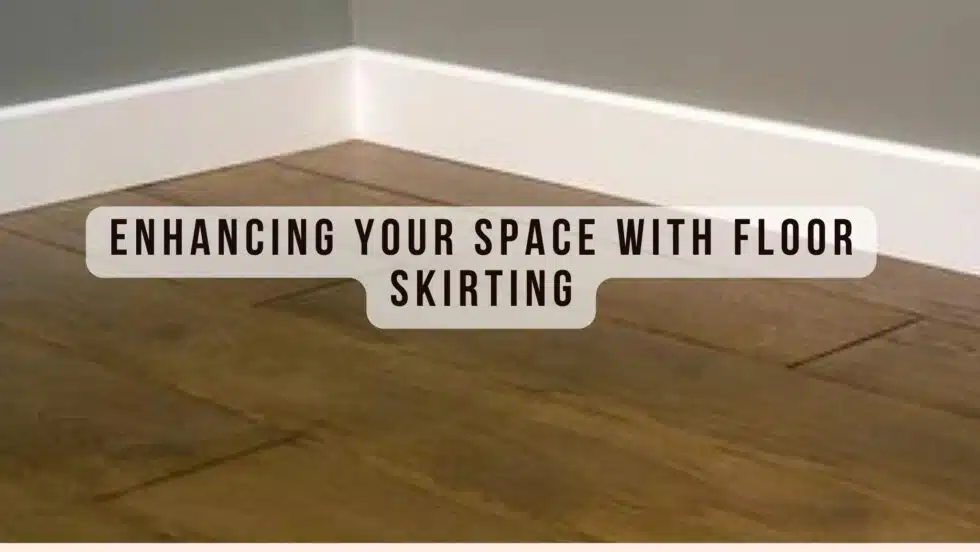Flooring is pivotal in a home’s interior design and can elevate a space’s aesthetics. But flooring accessories are also essential aspects of home renovation, which many people overlook which resultingly compromises their house’s overall appearance and practicality.
In this blog, we will shed light on the purpose of floor skirting, its types and tips on how to select the appropriate one for your home.
What is Floor Skirting?
Floor skirting, also called baseboards, is a slender strip of material that covers the bottom of an interior wall. It’s designed to hide the link between the wall surface and the floor, offering a seamless shift. This bolsters the home’s interior design and safeguards the walls from corrosion, scratches and vacuum cleaners.
The Purpose of Floor Skirting

Visual Attraction
They finish your space’s look after you place a flooring, fostering a coherent appearance. You can incorporate skirting boards into your interior design to give off a personalised vibe or add some intricacy based on their motif and shade.
Safety
Skirting boards work as a blockade safeguarding walls from cleaning tools, furniture, and mops. Baseboards prevent dents, scuffs and damage due to mops or cleaning tools.
Hiding Gaps
They hide any non-uniform slits or edges left during flooring installation. Floor skirting conceals the unsightly gap between the wall and the floor, particularly in older buildings where floors and walls are often not completely aligned.
Visual Attraction
It develops a seamless visual transition from wall to floor giving a sleek appearance to the space. Skirting can work as a delicate design component or a daring statement based on the motif selected.
Types of Floor Skirting

1. Medium Density Fiberboard or MDF
It is a pocket-friendly substitute for wood. MDF skirting is versatile, long-lasting and convenient to paint, making it a favoured option for contemporary interior designs and cheap home renovations.
2. Wood
Wooden skirting is a conventional, vibrant and multi-purpose option that goes with nearly any home design. You can paint or stain it to match your decor and choose from numerous available finishes. It suits classic buildings and spaces with wooden furniture or floors.
3. Polyvinyl Chloride or PVC
It is waterproof, long-lasting, and best for human environments. PVC skirting is an excellent option for washrooms, basements and kitchens. As it is effortless to clean, this skirting type is best for spaces susceptible to water, such as kitchens and washrooms.
4. Metal
Metal skirting is shiny, and has a modern and industrial appearance. Typically made of stainless steel or aluminium, it is a splendid option for use in commercial buildings, industrial spaces and modern residences.
5. Tile
Tile floor skirting can foster a smooth shift in spaces with tiled floors. It is often used in kitchens and washrooms and is an incredible way to match your wall tiles or floor for a steadfast appearance. Tile skirtings are sturdy, fancy and effortless to tidy up. They are perfect for matching tiled floors and Spanish or Mediterranean-themed houses.
Choosing the Right Floor Skirting

Picking an appropriate skirting for your home requires considering multiple aspects including:
Interior Design Theme
Choose a skirting that matches the aesthetical theme of your space such as contemporary, classic, industrial, etc. For conventional style, wooden skirting with delicate motifs is perfect while shiny, simple skirting with neat lines will go well with fashionable spaces.
Material
The skirting material should complement the space’s function. Tile or PVC is good for damp spaces, while MDF or wood can complement living areas well.
Select materials that are durable enough for the space’s conditions such as PVC for damp rooms. Think about the space’s purpose as high-traffic rooms need sturdy materials such as metal or wood.
Height and Proportion
Consider the skirting’s height in alignment with your ceiling height. Higher skirting boards might give a classy appearance in spaces with high ceilings. A more thorough profile matches classic spaces, while a minimalistic style goes with trendy decor. For example, taller skirting could overwhelm a small room but make a roomy space feel more graceful.
Colour Coordination
Take into account the skirting’s colour and either pick one that matches your wall’s colour or contrasts with it to give vibrant vibes. You can use wood skirting to complement natural colours or MDF to paint it in any tone. Go for white if you like classic decor but select skirting in a contrasting hue to give a vibrant vibe. Also, choose a matching finish for other trim components in the space.
Installation and Maintenance
Opt for a skirting that is convenient to install and maintain. The skirting should be made of a material that needs comparatively less care than others. For example, wood skirting requires sporadic varnishing. PVC and MDF are typically more inexpensive and effortless to install than metal or wood.
Budget
Opt for a skirting material that is affordable for you. Polyvinyl chloride and Medium Density Fibreboard fall on the frugal end of the spectrum than wood or tile.
Conclusion
Skirting is a flooring accessory but plays an essential role in maintaining the look and feel of your home. By understanding the various skirting materials and other aspects such as types, usage and design, you can pick a suitable option. It is recommended to choose floor skirting wisely to make your room look stunning.




